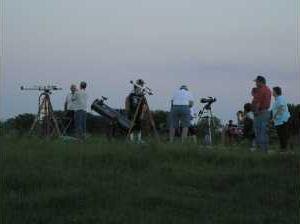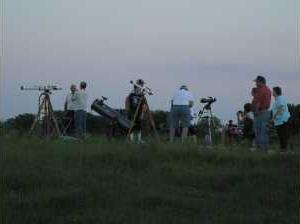You’ve probably heard the expression, “The Dog Days of Summer” once or twice before. But these Dog Days don’t actually have anything to do with earthly canines – its’ all about the stars! The ancient Greeks and Romans believed that when the Dog Star Sirius began to rise with the sun in July and August, it actually brought the heat of summer with it.
The Greeks believed that Sirius brought not only the heat of summer, but also fires and fevers. Sirius and the “Dog Days” even make an appearance in Homer’s Iliad:
“Sirius rises late in the dark, liquid sky
On summer nights, star of stars,
Orion’s Dog they call it, brightest
Of all, but an evil portent, bringing heat
And fevers to suffering humanity.”
Thankfully today we know that the star Sirius isn’t really responsible for all things awful about summer. The Dog Days are still an interesting term for this time of year – when the weather heats up, and no one really wants to get outside and do anything in the heat. Don’t let the Dog Days stop you from enjoying the outdoors, though! There are many great activities you can participate in during the cooler evenings, with just a few precautions.
The simplest is to take a walk! Head to a local park and enjoy the sounds of night singing insects, frogs, and birds with the whole family. See how many different sounds your family can identify, or try to sneak up on a croaking frog to watch it sing. Many parks have well lit walking areas so you can avoid stumbles.
While you’re walking, you can also go on a “diamond hunt” with the kids. Take a flashlight along, and hold it at eye level to look out into the grass and bushes. You’ll see all kinds of flashes and sparkles! Those sparkles are the reflections of your flashlight from the eyes of many insects and spiders. You can even get close to those sparkles and see what kind of creature is hiding in the grass.
Bugs and sparkles not really your thing? Then turn your gaze upward and check out the stars! There’s a lot to see in the summer night sky, from constellations like Canis Major (the star Sirius makes up the constellation’s nose!) to streams of meteors in early August during the Perseid Meteor Shower. Many constellations and celestial objects can be observed without even a telescope, as long as you have a good, dark area to stargaze. Cheyenne Bottoms is great for stargazing, located far from any city lights. The Kansas Wetlands Education Center holds regular stargazing events throughout the year, in case you need a bit of guidance in getting started!
No matter what activity you choose, stay safe! Make sure you’re armed with mosquito repellant to deter those pesky insects. Stay hydrated by drinking plenty of water – cooler evenings can still be awfully warm here in Kansas. Bring a flashlight along (or make use of your cell phone’s light) to avoid tripping over unseen obstacles. Stay near your vehicle if you’re in an unfamiliar area – the last thing you want is to get lost in the dark. But above all, relax and enjoy a beautiful evening during the Dog Days of Summer!
Need more ideas of how to enjoy the Dog Days? Check out our events calendar at http://wetlandscenter.fhsu.edu/events/ for upcoming ways to enjoy your summer. Give us a call at the KWEC at 1-877-243-9268 and we’ll be happy to help you plan your evening activities!
Wetland Explorer: Dog Days





